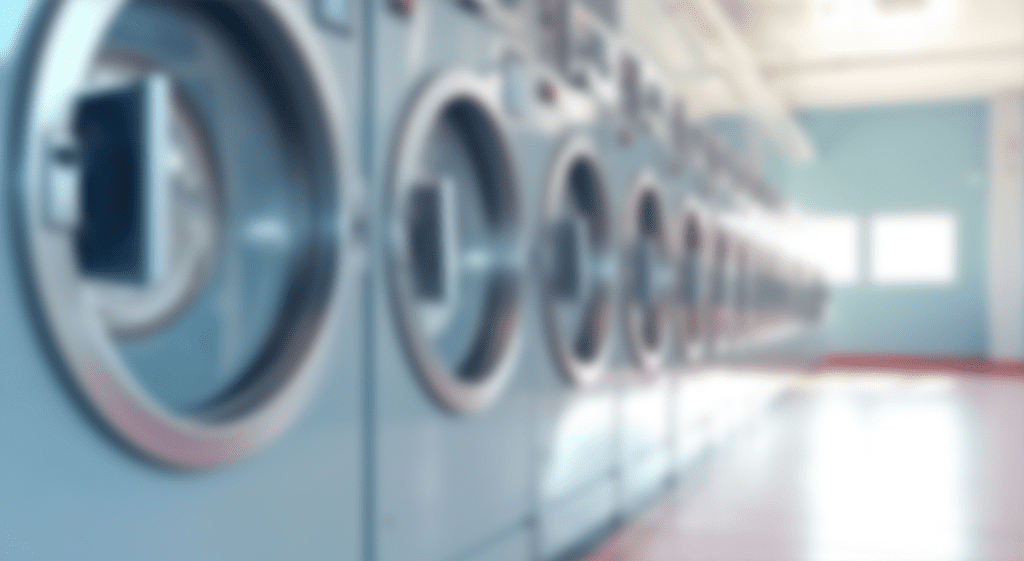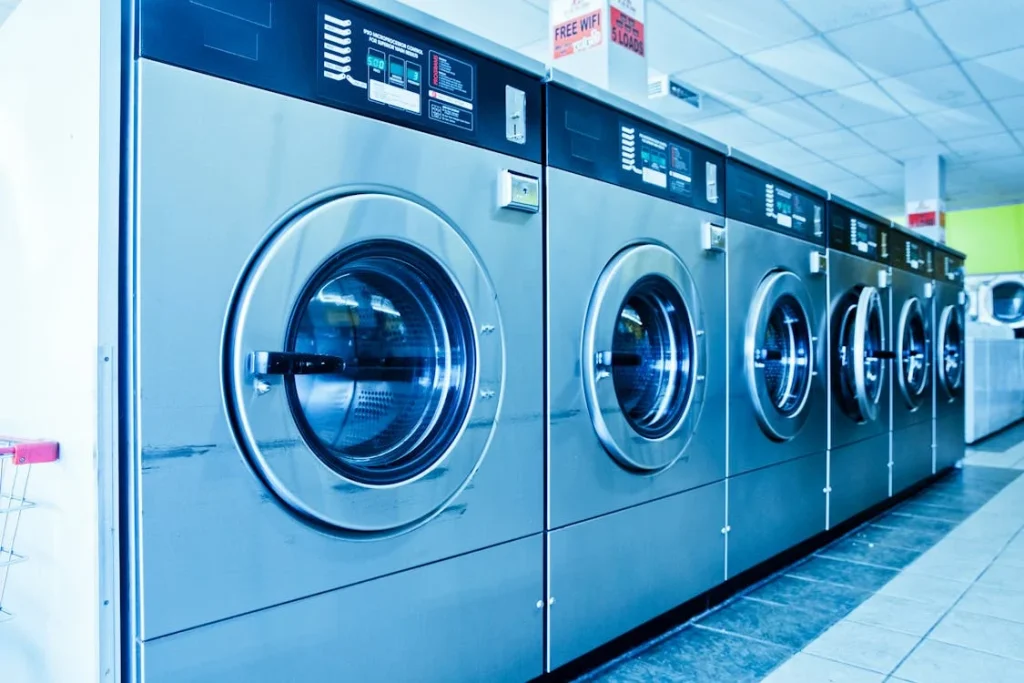Selecting the right wash extractor capacity is a crucial decision for any business in the industrial laundry sector. Whether you run a hotel, hospital, commercial laundry service, or gym, choosing a washer with the correct capacity can make a huge difference in efficiency, cost savings, and overall productivity. In this guide, we’ll walk you through the essential factors to consider, from load volume calculations to common mistakes to avoid, ensuring you make the most cost-effective and efficient choice. If you’re looking for high-quality industrial laundry equipment, explore SpinWashing for top-tier solutions tailored to your needs.
Tabla de contenidos
- 1. Understanding the Importance of Wash Extractor Capacity
- 2. Key Factors to Consider When Choosing a Wash Extractor
- 3. Calculating the Right Wash Extractor Capacity
- 4. Conclusion
- 5. FAQs
- 1. What happens if I choose a wash extractor that is too small?
- 2. Can I use a high-capacity wash extractor for small loads?
- 3. How do I know if my business needs an industrial or commercial washer?
- 4. Are high-speed extractors worth the investment?
- 5. Where can I buy a high-quality industrial wash extractor?
1. Understanding the Importance of Wash Extractor Capacity

1.1. Why Capacity Matters in Industrial Laundry
Wash extractor capacity plays a significant role in ensuring smooth and cost-effective laundry operations. The right machine can handle daily laundry loads efficiently, preventing overcrowding, excessive water usage, and high energy bills. If the extractor is too small for your operations, you’ll need to run multiple loads, leading to increased wear and tear on your machines and higher labor costs. On the other hand, if the extractor is too large, you’ll waste valuable resources such as water and detergent, reducing your return on investment (ROI).
Having the right washer-extractor capacity ensures that your laundry facility runs at maximum efficiency while keeping operational costs under control. It allows for better workflow management, minimizing delays and improving productivity in high-demand environments such as hotels, hospitals, and laundromats.
1.2. How Capacity Affects Efficiency and Costs
The efficiency of your laundry facility is directly tied to wash extractor capacity. Machines that are too small cause production bottlenecks, increasing labor hours, delaying turnaround times, and raising utility expenses. Conversely, a machine that’s too large for your laundry volume results in underutilization, wasting energy and reducing cost-effectiveness.
Energy and water consumption are two of the most significant operational costs in the industrial laundry industry. The wrong washer size can drastically affect your bottom line, leading to higher energy bills and unnecessary resource consumption. Choosing the right capacity ensures that your business minimizes waste, optimizes water and energy use, and maintains high efficiency.
2. Key Factors to Consider When Choosing a Wash Extractor
2.1. Business Type and Laundry Volume
The type of business you operate has a direct impact on washer-extractor requirements. Different industries handle different fabrics and laundry loads, so choosing the right machine depends on the volume and type of textiles you process daily. Below are some common business types and their recommended capacities:
Hotels and Resorts
Hotels manage large amounts of bedding, towels, table linens, and uniforms daily. A mid-sized hotel handling 50–100 rooms typically requires a 50–100 kg washer-extractor, while larger resorts may need machines that can process 150 kg or more per cycle. Investing in the right capacity ensures that linens are cleaned quickly and efficiently without disrupting operations.
Hospitals and Healthcare Facilities
Healthcare facilities deal with contaminated linens, patient gowns, and staff uniforms, requiring thorough and sanitary wash cycles. To maintain hygiene standards, hospitals need high-speed, high-capacity extractors that can handle 100–200 kg per load. Choosing a washer with programmable settings for disinfection cycles ensures compliance with healthcare regulations.
Commercial Laundries and Industrial Operations
Commercial laundries process diverse fabrics in large volumes, from work uniforms to hospitality linens. Depending on the client base, a commercial laundry business might need machines with capacities ranging from 80 kg to 300 kg per load. These businesses also benefit from high-speed extraction models, which reduce drying time and improve efficiency.
Gyms, Spas, and Small Businesses
Smaller businesses such as fitness centers, beauty salons, and spas require compact yet powerful washer-extractors. Since they handle lighter laundry loads consisting of towels, robes, and workout clothes, machines with capacities between 20 kg and 50 kg are typically sufficient. Choosing an energy-efficient model can help these businesses reduce overhead costs while maintaining laundry quality.
2.2. Space Availability and Installation Requirements
Before purchasing an industrial washer-extractor, it’s essential to consider the available space in your facility. Large-capacity machines require adequate floor space, proper ventilation, and easy access for maintenance. Businesses with limited space can opt for stackable models or front-loading washers to maximize efficiency. Ensuring proper installation clearances and utility connections is also critical for long-term performance.
2.3. Energy and Water Efficiency
Investing in an energy-efficient washer-extractor can lead to significant cost savings over time. Newer models come with features such as automatic water level control, optimized detergent usage, and high spin speeds, which help reduce drying times and minimize energy waste. Machines with Energy Star certification or equivalent ratings ensure optimal efficiency and sustainability, helping businesses cut operational costs by 30-50% annually.
2.4. Spin Speed and Extraction Performance
The G-force rating of a wash extractor determines how much moisture is removed during the final spin cycle. Higher G-force machines (350-450 Gs) extract more water, reducing drying time and energy consumption. For businesses processing heavy linens, thick fabrics, or high-volume loads, investing in a machine with high spin speeds ensures faster turnaround times and improved operational efficiency.
2.5. Fabric Types and Load Characteristics
Different fabrics require different wash cycles. Delicate textiles, heavy-duty workwear, and mixed loads should be handled using programmable washers with adjustable cycle settings. Investing in a machine with customizable wash programs ensures that all fabrics receive the appropriate care, extending their lifespan while maintaining optimal cleanliness and sanitation standards.
3. Calculating the Right Wash Extractor Capacity
3.1. Understanding Washer Capacity Ratings
Washer-extractors are rated based on kilograms per load, which refers to the dry weight of laundry that can be processed in one cycle. Understanding capacity ratings helps businesses select the most efficient machine for their specific needs.
3.2. How to Estimate Your Required Load Size
To determine the ideal washer capacity for your business, follow these steps:
- Estimate your total daily laundry volume (kg/day).
- Divide by the number of loads per shift.
- Choose a machine that meets or slightly exceeds your laundry demands.
For example, a hotel processing 500 kg of laundry per day and aiming to complete washing in 5 cycles per shift would require a 100 kg capacity washer-extractor for efficient operations.
4. Conclusion
Selecting the right industrial washer-extractor capacity is a critical decision for businesses looking to optimize laundry operations. By considering factors such as daily laundry volume, energy efficiency, fabric type, and future growth, you can make an informed investment that boosts productivity while minimizing costs.
For top-quality commercial and industrial washer-extractors, visit SpinWashing today. Need expert guidance? Contact SpinWashing for professional assistance and the best industrial laundry solutions.
5. FAQs
1. What happens if I choose a wash extractor that is too small?
A smaller capacity leads to frequent wash cycles, increased energy consumption, and higher labor costs, ultimately reducing efficiency.
2. Can I use a high-capacity wash extractor for small loads?
Yes, but it’s inefficient. Running half-empty loads wastes water, detergent, and energy, increasing operational expenses.
3. How do I know if my business needs an industrial or commercial washer?
Industrial machines are designed for heavy-duty, high-volume usage, while commercial washers are best for small to medium-scale businesses.
4. Are high-speed extractors worth the investment?
Yes! Machines with higher G-force reduce drying times, lower energy costs, and improve overall efficiency.
5. Where can I buy a high-quality industrial wash extractor?
You can explore top washer-extractors at SpinWashing, offering reliable solutions for hotels, hospitals, and laundromats.
Here are some other articles that we think might interest you:
Top 6 Brands of Industrial Washing Machines


